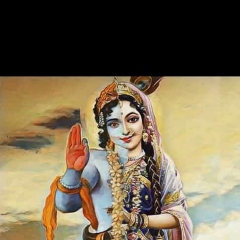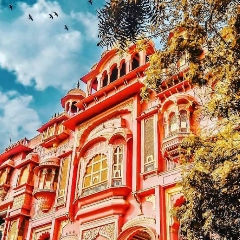Question 2 :
Check whether the following is quadratic equation : $x^3 - 4x^2 - x + 1 = (x-2)^3$
Question 3 :
Does the following equation has the sum of its roots as 3? $3x^2-3x+3=0$
Question 4 :
State True or False: If in a quadratic equation, the coefficient of x is zero, then the quadratic equation has no real roots.
Question 5 :
An express train takes 1 hour less than a passenger train to travel 132 km between Mysore and Bangalore (without taking into consideration the time they stop at intermediate stations). If the average speed of the express train is 11km/h more than that of the passenger train, find the average speed of the passenger train.
Question 6 :
Check whether the following is a quadratic equation: $x(x + 1) + 8 = (x + 2) (x – 2)$
Question 7 :
A train, travelling at a uniform speed for 360 km, would have taken 48 minutes less to travel the same distance if its speed were 5 km/h more. Find the original speed of the train.
Question 8 :
A natural number, when increased by 12, equals 160 times its reciprocal. The number is ____
Question 9 :
State True or False whether the following quadratic equation has two distinct real roots: $x^2-3x+4=0$
Question 10 :
At $t$ minutes past 2 pm, the time needed by the minutes hand of a clock to show 3 pm was found to be 3 minutes less than $\frac{t^2}{4}$ minutes. Find $t$.
Question 11 :
If Zeba were younger by 5 years than what she really is, then the square of her age (in years) would have been 11 more than five times her actual age. What is her age now?
Question 12 :
Find the roots of the following quadratic equation (by the factorisation method): $2x^2+\frac{5}{3}x-2=0$
Question 13 :
State True or False whether the following quadratic equation has two distinct real roots : $\left(x-\sqrt{2}\right)^2-2\left(x+1\right)=0$
Question 14 :
Represent the following situation in the form of a quadratic equation : A train travels a distance of 480 km at a uniform speed. If the speed had been 8 km/h lesss, then it would have taken 3 hours more to cover the same distance. We need to find the speed of the train.
Question 16 :
Find the roots of the following quadratic equation by factorisation: $100x^2 – 20x + 1 = 0$
Question 17 :
John and Jivanti together have 45 marbles. Both of them lost 5 marbles each, and the product of the number of marbles they now have is 124. Write an equation to find out how many marbles they had to start with.
Question 18 :
An express train takes 1 hour less than a passenger train to travel 132 km between Mysore and Bangalore (without taking into consideration the time they stop at intermediate stations). If the average speed of the express train is 11km/h more than that of the passenger train, find the average speed of the express train.
Question 19 :
Justify why the following quadratic equation has no two distinct real roots: $\left(x+4\right)^2-8x=0$
Question 20 :
Find the roots of the following quadratic equation: $3x^2 – 4\sqrt{3}x + 4 = 0$.
Question 21 :
Represent the following situation in the form of a quadratic equation : The area of a rectangular plof is 528 $m^2$. The length of the plof (in metres) is one more than twice its breadth. We need to find the length and breadth of the plof.
Question 22 :
A cottage industry produces a certain number of pottery articles in a day. It was observed on a particular day that the cost of production of each article (in rupees) was 3 more than twice the number of articles produced on that day. If the total cost of production on that day was Rs. 90, find the cost of each article?
Question 23 :
Using method of completing the square , $9x^2-15x+6=0$ can be written as ?
Question 24 :
Find the nature of the roots of the equation $3x^2 – 2x +\frac{1}{3} = 0$.
Question 25 :
A cottage industry produces a certain number of toys in a day. The cost of production of each toy (in rupees) was found to be 55 minus the number of toys produced in a day. On a particular day, the total cost of production was Rs. 750. Find out the number of toys produced on that day.
Question 26 :
Using method of completing the square , $3x^2-5x+2=0$ can be written as ?
Question 28 :
Find the roots of the following quadratic equation by factorisation: $2x^2 + x – 6 = 0$
Question 29 :
Check whether the following is quadratic equation : $(x+2)^3 = 2x (x^2 - 1)$
Question 30 :
Find the roots of the quadratic equations, if they exist, by the method of completing the square: $2x^2 – 7x + 3 = 0$
Question 31 :
Check whether the following is a quadratic equation: $x^2 + 3x + 1 = (x – 2)^2$
Question 33 :
John and Jivanti together have 45 marbles. Both of them lost 5 marbles each, and the product of the number of marbles they now have is 124. Find out how many marbles they had to start with.
Question 34 :
Does the following equation has the sum of its roots as 3? $-x^2+3x-3=0$
Question 35 :
State True or False: Every quadratic equation has at least one real root.
Question 36 :
Find the roots of the quadratic equations, if they exist, by applying quadratic formula: $4x^2+4\sqrt{3}x+3=0$
Question 37 :
A rectangular park is to be designed whose breadth is 3 m less than its length. Its area is to be 4 $m^2$ more than the area of a park that has already been made in the shape of an isosceles triangle with its base as the breadth of the rectangular park and of altitude 12 m. Find its length and breadth.
Question 38 :
State True or False whether the following quadratic equation has two distinct real roots: $2x^2-6x+\frac{9}{2}=0$
Question 39 :
At present Asha’s age (in years) is 2 more than the square of her daughter Nisha’s age. When Nisha grows to her mother’s present age, Asha’s age would be one year less than 10 times the present age of Nisha. Find the present age of Asha.
Question 40 :
Had Ajita scored 10 more marks in her mathematics test out of 30 marks, 9 times these marks would have been the square of her actual marks. The marks scored by her are?













































